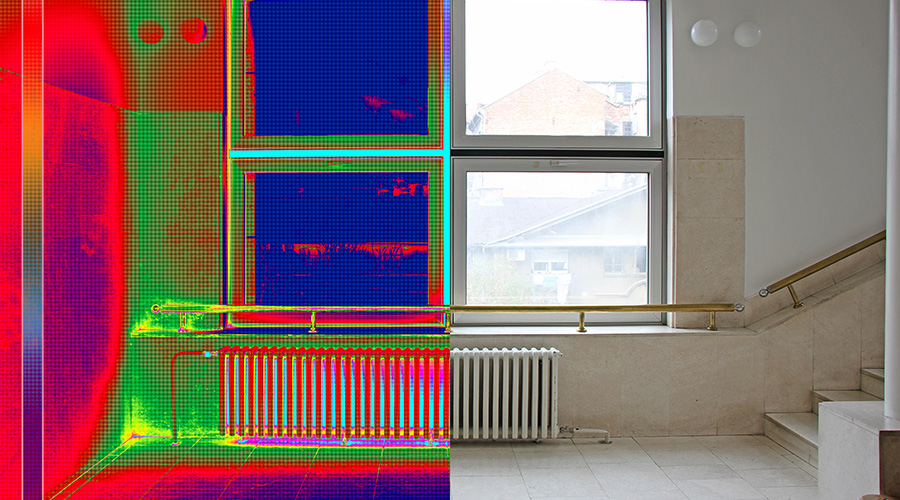Painting Facilities 'Green'
Specified and applied properly, recycled paints offer savings, high-quality performance and environmental friendliness
Most organizations are searching for every possible opportunity to go greener. A growing number of organizations — including some federal, state and local governments — are turning to recycled paint as part of their efforts to go green and control costs, while still ensuring a high-quality finish.
While these paints might be new to some, the process has been around for years. By understanding the process and the opportunities it offers for savings and environmental friendliness, managers can more easily decide whether recycled paints are a viable option for their facilities.
Recycling Review
Water-based or latex paints can be recycled, while oil-based paints that use petrochemicals rather than water as the solvent, cannot. Two basic methods for recycling latex paint exist.
One involves reblending. Paints are sorted by type — interior or exterior, color, and finish, high gloss versus flat. Reblending is a two-step process that involves remixing the paint and then screening it to remove any hardened material and to improve consistency.
The manufacturer repackages the paint without adding new paint or making other modifications. Reblending is limited to fairly neutral colors and works best for applications where color matching is not an issue, such as undercoating, graffiti overcoating, and exterior applications.
The second method is reprocessing, which can include adding new paint and other components, such as resins, that enhance the paint for the customer’s specific purposes. Reprocessed paint often is available in more colors, since it can be tinted to achieve color matches.
The best ways to find sources for recycled paint are to contact paint dealers or search online for recyclers. The Master Painters Institute offers a testing and certification program for recycled paint, which ensures that all certified paints are high quality and meet the same high standards.
Benefits and Challenges
Managers can achieve several important benefits from specifying recycled paint for use by paint shops in their facilities. Among the benefits are lower cost, resource conservation, reduced volatile organic compounds (VOC) emission, and reduced waste. Also, the paint is produced locally, so transportation costs are lower and they require fewer resources. Producing the paint also does not require organic solvents.
Reusing 10 gallons of paint saves enough energy to power an average household for one month. And, at a typical cost of nothing to $10 dollars a gallon, it is a very economical painting solution.
Performance-price comparisons between new and recycled paints have been very favorable to recycled paints. In one well-documented case, the Portland Water Bureau used 100 percent recycled paint to refurbish the town’s water tanks. The bureau purchased the recycled paint from local producers who had collected leftover paints from the city’s recycling program. The recycled paint cost 75 percent less than new latex paint. On just the initial pilot, the project generated savings of $3,500.
The main challenge to wider use of recycled paint is linking recyclers with markets. To provide a catalyst for getting more recycled paints to potential users, internet links were created to successfully opened markets between recyclers and several industries, such as food and glass manufacturers, which have become regular users. Also, governments such as the state of Michigan are sponsoring marketing directories of recycled materials.
The marketing effort involves generated test results demonstrating how recycled paints compare to new paint in performance, quality and ability to stand up in all applications. The U.S. Environmental Protection Agency (EPA), in an alliance with local and state environmental agencies, has conducted comprehensive demonstrations to measure the performance of recycled paint. The demonstrations consisted of the following steps:
-
Develop a recycled paint specification to allow the comparison of results on an equal basis.
-
Select suppliers who can formulate recycled paints to meet the specifications.
-
Get various user sites to apply paints in a wide variety of interior and exterior applications.
-
Set criteria for measuring performance.
-
Have users at the demo sites apply the recycled paint.
-
Get recorded observations from users after application of the demo tests to document the performance characteristics of the recycled paints.
-
Communicate demo test findings to municipal, state and other purchasing agents.
-
Re-evaluate the long-term wear properties three to four years after application to determine the recycled paints’ ability to perform over time.
-
The specification included a long list of requirements, most of them similar to specifications for new paints, for example:
-
Maximum lead content — less than or equal to 600 parts per million (ppm)
-
Maximum mercury content — less than or equal to 50 ppm for Type I and Type III, and less than or equal to 100 ppm for Type II
-
Odor — no irritation during application and no odor after 48 hours
-
Drying time — two hours
-
Application properties — meet Federal Standard 141
-
Shelf life — greater than or equal to 12 months after delivery
-
Color — ASTM D2244.
Also, the specifications called for a minimum post-consumer recycled paint content of 50 percent. Other standards covered freeze-thaw stability, consistency, viscosity, reflectivity, dry opacity, flexibility, scrub resistance, total solids, dispersion, grind, and gloss.
Paints had to have properly labeled material safety data sheets (MSDS), including the Do Not Freeze designation, which is the same as new paints, since all paints that have been frozen should be discarded.
Suppliers were given the specifications so recycled latex paints used in the demo would be of equal quality. They also received color chips to be matched by tinting, where applicable.
Users then filled out application forms to record the type of surface, whether the job was interior or exterior, application method, color used, surface preparation required, paint consistency, ease of application, drying time, odor, and how the application compared to new paint application. Sites contained a variety of substrates, including wood, cinder block, concrete block, metal and wallboard.
The Envelope, Please
The results generally were very positive, but a few negatives surfaced. For example, out of eight sites where the demonstration applications were tested, one user felt the wood surface application did not adhere as well as new paint, but the metal surface application was comparable.
A few other users voiced complaints about odor and paint consistency. One site had a problem initially with color match, but the problem was corrected.
Out of the eight sites, seven said that, based on the demo tests, they would use recycled paints again, and one said he was not sure.
Overall, the demo showed recycled paint can compete with new paint in terms of performance, quality and versatility, and it is much more economical.
The long-term results also were very promising. After a minimum three years in service, researchers revisited the recycled-paint sites to find that coatings were holding up to the various conditions just as well as new paints, including some areas that featured salt-water spray.
‘Green’ Paint Strategies
Maintenance managers have at least six ways to get the most from their paint dollars, and all of them involve some form of conservation. The results of the efforts include significant savings, while maintaining the high level of paint performance managers demand. Here are the strategies:
-
Use it up. A second coat requires minimal surface preparation, extends life, better resists chipping and lowers the overall cost.
-
Dispose of it properly. Check the label for manufacturer’s disposal suggestions. Check for available disposal sites for usable paints. Dry and discard hardened paint or paint that has been frozen.
-
Store it well. Doing so can result in extended performance life. Make sure the container is sealed tightly, then upend it so the paint can flow into the crack between the lid and the can.
-
Buy smart. Finding a use for leftover paint, especially a lot of it, can be a challenge. Carefully measuring the square feet of the area to be covered and linear feet of trim ensures managers buy only what they need. Managers will have to do this only once if they save the information in the history record for the location or equipment.
-
Go basic. Buy only white paint, and color-match it for any color needed, even for touch-ups. The result is an inventory of a small amount of each type used — oil-based, water-based, epoxy, etc.
-
Reuse and recycle. Some communities offer free recycled paint. Users drop off surplus paint. The paint and can are recycled, and they pick up recycled paint for the next project. Whether free or not, the cost is substantially less than that of new paint.
— Thomas A. Westerkamp
|
Related Topics:











